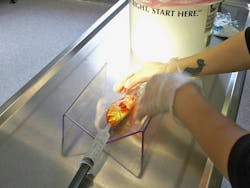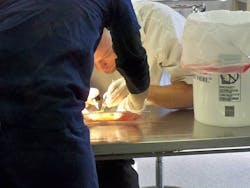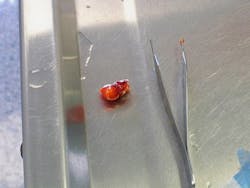Patrick Talbert, a vet tech at Carrboro Plaza Veterinary Clinic in Carrboro, NC, has kept goldfish as pets for 17 years. And one who still lives to this day—a comet named Frank—appeared to have a dime-sized bump on his left side, which Patrick's mother, Zandra, noticed in September 2010.
Zandra contacted veterinarian Erik Dorsch, DVM, of The Animal Hospital of Carrboro, who is also a life-long fish hobbyist. He told Zandra that Frank's growth could eventually affect his swimming and quality of life; therefore, he scheduled Frank for surgery in October.The tumor turned out to be a fibrosarcoma, which is malignant and occurs primarily in humans, dogs and cats. Thankfully, fibrosarcomas are superficial and fish that have had them do well for a long time after removal, with only a recurrence on the outer surface.
A week post-op, Frank appeared to be healing very well, and already looked to be regrowing his scales, according to Dorsch.
About the Author
Lee Dubay
Managing Editor
Lee Dubay is managing editor for Laser Focus World. She is a seasoned editor and content manager with 20 years of experience in B2B media. She specializes in digital/print content management, as well as website analytics, SEO, and social media engagement best practices.



